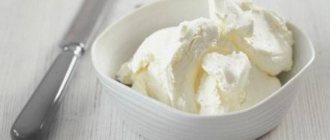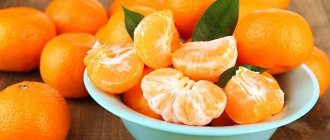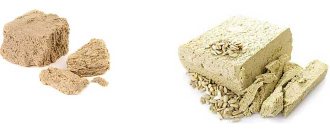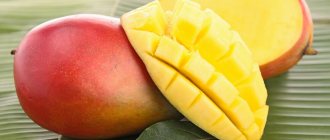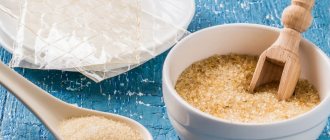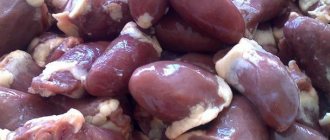Updated: December 23, 2020, at 10:32 am
- 7.1 Author of the publication
This article tells you how many calories are in homemade pickled cucumbers , and provides a table of the calorie content of such preservation depending on the salting method.
Information on the chemical composition and beneficial properties of the product is also provided. Here are recipes by which you can pickle delicious crispy cucumbers at home.
Calorie content of pickled cucumbers
On average, the calorie content of pickled cucumbers is 13-16 kcal per 100 grams. But we don’t weigh pickled delicacies before eating them. Therefore, it is much more important to know how many calories are in 1 pickled cucumber:
- if we are talking about large cucumbers, each will contain about 6-8 kcal;
- in an average salted vegetable you will find 4-5 kilocalories;
- a gherkin (small cucumber) will contain only 1-2 kcal.
The consumption rate for such a product is no more than 200 grams per day for an adult, and of course not in one sitting. However, this largely depends on the salting method. If the recipe uses vinegar, it is better to limit it to 100 grams, and it is better not to give this vegetable to your child at all. If the cucumbers were preserved without vinegar, you can eat them at the established rate. Even children from 3 years old can take them, but with a limited limit - no more than 50 grams per day.
How many calories are in pickles?
Here's how much:
The calorie content of pickled cucumbers is 11 kcal per 100 grams.
Proteins, fats and carbohydrates (BJU) per 100 grams:
Proteins - 0.8
Fats – 0.1
Carbohydrates – 1.7
What is the calorie content of such cucumbers prepared in different ways? And here it is:
Calorie table, per 100 grams of product:
| Product | Calories, in kcal |
| calorie content of homemade pickled cucumbers | 16,3 |
| calorie content of pickled cucumbers | 13,0 |
And their nutritional value is as follows:
Nutritional value table, per 100 grams of product:
| cucumbers | Squirrels, gr. | Fats, gr. | Carbohydrates, gr. |
| homemade salty | 4,2 | 2,3 | 1,5 |
| salted barrels | 0,7 | 0,1 | 1,6 |
Calorie table
Depending on whether the cucumbers are store-bought or homemade, as well as the salting principle, the energy value of the finished product will be slightly different. We will provide a plate indicating the method of preservation and the origin of the product and indicate the corresponding calorie content.
| Type of cucumber | Calorie content per 100 g, kcal |
| Store-bought pickled | 16 |
| Homemade pickled | 16,3 |
| Homemade salted (barrel) | 13,0 |
The lowest calorie product is obtained by salting vegetables at home without using vinegar. In this case, practically no sugar is added to the brine, which determines the lower energy value of the finished product in comparison with pickled and store-bought options. But in any case, this very value differs little from the calorie content of a fresh cucumber.
What nutritionists advise
Any self-respecting nutritionist will tell you that, in principle, even home-canned food is not the best thing you can put into your stomach.
Pickled cucumbers by default contain vinegar, which increases the acidity of the stomach and intestines. Therefore, from the point of view of gastroenterology, such a product is not only not recommended for patients with gastritis or ulcers, but also not recommended for healthy people.
Specialist attitude towards purchased snack options. In addition to the not very healthy vinegar, additional preservatives are often added to such preservation, and sometimes dyes and other industrial “hazards”. Therefore, nutritionists have a very wary attitude towards such products.
On the other hand, if the cucumbers were salted and canned at home, without vinegar, using only salt and heat treatment, this is a safer option. However, experts do not allow even such a product in any medical diet. They cannot prohibit it for a healthy person, and they can’t, but the benefits of the vegetable remain even after such processing.
Opinions also differ on the issue of losing weight. Cucumbers sealed with vinegar will “beg to be drunk” after entering the stomach. Vinegar attracts excess water into the body, causing tissue swelling. And this is instantly displayed on the figure.
Pickled cucumbers behave in much the same way; salt attracts and retains water no worse than vinegar. But, nevertheless, this is fiber; with reasonable consumption, such a product cleanses the intestines, as if scraping off from its walls everything that is retained and bringing it out.
Therefore, before being tempted by such a product, it is important to clarify the details of your diet and make a decision about the desired cucumber, carefully weighing the pros and cons for yourself.
Contraindications to taking pickled cucumbers
Despite all the usefulness of pickles, there are contraindications to their use. Due to the high salt content and large amount of liquid in the composition, pickles retain water in the body and lead to the formation of swelling.
Therefore, the consumption of pickled vegetables should be minimized in the following cases:
- presence of hypotension or hypertension;
- breastfeeding period;
- pathology of the pancreas.
It is necessary to completely exclude the dish from the daily diet for people suffering from:
- chronic and acute kidney diseases;
- intestinal disorders;
Pickled cucumbers are also contraindicated for children under 5 years of age, since a large amount of salt in the composition negatively affects the functioning of the kidneys.
How to pickle cucumbers
We will present some of the most common recipes for preserving cucumbers that you can repeat at home.
Recipe without vinegar
The calorie content of cucumbers sealed according to this recipe will be approximately 12-13 kcal per 100 grams of ready-made winter snack. For the recipe you will need:
| Fresh cucumbers | 5 kg |
| Dill "umbrellas" | 5 pieces. |
| Garlic | 10 medium cloves |
| Horseradish | 8 sheets |
| Bay leaf | 8 sheets |
| Black currant leaves | 20 pcs. |
| Red and black pepper | taste |
| Salt | based on 20 g per 1 liter of brine |
Cooking method:
- Wash the cucumbers and trim the edges.
- Place in a saucepan along with all the greens and fill with brine. The brine is prepared at the rate of 2 level tablespoons of salt for every liter of water. As a result, this brine should completely cover the cucumbers in the pan.
- Cover the vegetables with oppression and leave for 2-3 days at room temperature.
- Then place the cucumbers in pre-sterilized jars, add new spices - bay leaf and pepper.
- Strain the brine, boil and carefully pour into jars while it is hot.
- Close the jars with nylon lids, so they will remain there until the moment when you want to open the first preserve.
Marinate with vinegar
These are the same “vinegar” cucumbers that are so useless, but so tasty. The average calorie content of such preservation is approximately 14-16 kcal per 100 grams of product. You will need:
| Gherkins | 2 kg |
| Garlic | 2 cloves |
| Carrot | 1 PC. |
| Dill umbrella | 1 PC. |
| Parsley | 1 sprig |
| Vinegar | 5 ml |
| Water | 1 l |
| Salt | 25 g |
| Sugar | 40 g |
| Black pepper | 5 peas |
| Cherry leaves | 3 pcs. |
| Dried cloves | 3 buds |
Cooking method:
- Cucumbers need to be soaked in water for 6 hours.
- Then put them in jars, add garlic, chopped carrots, dill and parsley.
- Fill the jars with boiling water and leave for 10-13 minutes. Drain the water, repeat the manipulation with boiling water.
- Add sugar, salt, cherry leaves, spices to the drained water and let it boil.
- Pour the resulting marinade over the cucumbers, add 5 ml of vinegar to each jar, and cover with a sterile lid.
- Wrap the jars and leave until completely cool.
Marinate with ketchup
This is the most popular recipe that can even be found on the packages of ketchup itself. The calorie content of such preservation will be approximately 16-17 kcal per 100 grams of prepared cucumbers. Products you need:
| Small cucumbers | 3 kg |
| Water | 1.8 l |
| Salt | 40 g |
| Vinegar 9% | 200 ml |
| Sugar | 200 g |
| Ketchup "Chili" | 160 g |
| Garlic | 2 cloves |
| Dried cloves, black and allspice, bay leaf | taste |
Cooking method:
- Wash the cucumbers and soak for 4-5 hours in cold water.
- Place the spices in washed jars, then pack the cucumbers tightly.
- Boil water with sugar, ketchup and salt. As soon as the sugar and salt dissolve, add vinegar and immediately pour the brine into jars.
- Place the jars in boiling water and sterilize for 15 minutes, then remove from the pan.
- Roll up the jars with sterile lids, turn them upside down and wrap them, leaving them like that until they cool completely.
Composition of the product
Pickles contain on average 0.8 g of protein, 0.1 g of fat and 1.7 g of carbohydrates, 1.4 g of fiber and 0.4 g of ash per 100 g of product. Despite processing, vitamins remain in them. From micro- and macroelements, pickled cucumbers contain:
- chromium;
- boron;
- aluminum;
- calcium;
- potassium;
- iron;
- vanadium;
- sodium;
- magnesium;
- cobalt;
- iodine;
- phosphorus;
- sulfur;
- copper;
- manganese;
- chlorine;
- sodium;
- nickel;
- molybdenum;
- fluorine;
- rubidium;
- zinc.
Carbohydrates are represented by starches, dextrins, monosaccharides and disaccharides.
What vitamins do pickles contain?
Despite the rather noticeable heat treatment, these vegetables contain a considerable arsenal of vitamins such as:
- niacin;
- biotin;
- nicotinic, ascorbic and pantothenic acid;
- tocopherol (mainly alpha);
- folates;
- pyridoxine;
- riboflavin;
- thiamine;
- retinol
Despite the harm attributed to them, pickles also provide a certain amount of benefits to a healthy human body:
- due to the formation of lactic acid during the salting process, such preservation has a beneficial effect on the intestinal microflora, debugging intestinal digestion;
- due to the spices used in the pickling process, cucumbers increase appetite;
- due to their pungency, they stimulate the production of gastric juice, accelerating the stage of gastric digestion;
- fiber, which is preserved in the vegetable in unchanged quantities, cleanses the intestines of toxins and normalizes its peristalsis.
In addition, the vitamin composition of canned cucumber is preserved, albeit not in its original form. However, even such vegetables are an excellent prevention of winter hypovitaminosis; the main thing is not to overuse this product.
How to choose products for pickles
The taste of prepared pickles directly depends on the quality of the products used, so you need to carefully select vegetables. First you need to decide on the method of pickling cucumbers: will they be lightly salted or salted? Whatever pickling method you choose, the first step when buying vegetables is to choose a fresh product with a minimum amount of chemicals.
We invite you to familiarize yourself with the Nozzle for plucking poultry: branded and homemade devices
Therefore, you should give preference to cucumbers:
- with a pronounced green tint to the skin;
- with fresh, non-withered tails;
- with a lot of black pimples;
- small in size, since large fruits can become overripe and have a large number of large seeds inside.
How to choose products for pickles
If cucumbers are purchased for lightly salted preparation, you need to pay attention to:
- peel thickness;
- color of pimples;
- fruit size.
The thickness of the peel is important when preparing lightly salted cucumbers without further preservation. A vegetable with thick skin will take longer to absorb the brine, and the cucumber itself will turn out tough. You also need to look at the color of the spikes. Cucumbers with black thorns are suitable for pickling.
During the cooking process, they break off and allow the spicy brine to penetrate deep into the vegetable. White pimples are characteristic of overripe salad vegetables. They are not suitable for making pickles, as they lack crunch and can turn out soft and tasteless.
At a time when cucumbers were pickled in huge wooden barrels, the size of the fruit did not matter. Today, 2 and 3 liter jars are used to prepare marinades, so preference should be given to smaller fruits. For pickling, it is recommended to take cucumbers 10-11 cm long.
It is important that the fruit is not overripe, as it contains an insufficient amount of lactic acid, which negatively affects the structure and taste of the vegetable. Well, in order for the pickles to be better preserved and not spoil, it is better to use seasonal vegetables for their preparation. Then the likelihood of the presence of chemicals in their composition is minimized.
Video about the benefits and harms of pickled cucumbers
From the video you will learn about the chemical composition of pickled cucumber, its beneficial properties and cases when such a product can be harmful.
Pickled cucumbers are one of the most favorite winter treats in almost all families. However, it is important to understand that this is not a fresh vegetable, and its benefits outweigh its harms. But, nevertheless, these are some kind of vitamins, and fiber definitely won’t harm the intestines.
What goes best with crispy cucumbers in winter? For those products whose caloric content would not hurt to know - potatoes, side dishes based on cereals, as an addition to vinaigrette. But men see only one use for such pickles - as a snack with higher-calorie vodka.
Do you like pickled cucumbers? What recipe do you use to cover these vegetables for the winter? Share your experience in the comments, it is interesting and useful to all readers!
Author of the publication
Examples of menus with pickles for weight loss
Supplying the body with vitamins and minerals during the period of weight loss is a necessary condition for the normal functioning of the body, since the diet involves certain dietary restrictions. When pickled, cucumbers cannot be heat treated, so they retain as much as possible all the beneficial properties of the fresh vegetable.
Benefits of eating pickled cucumbers:
- improved functioning of the digestive system due to the content of lactic acid;
- accelerating the process of digesting heavy dishes (promotes the secretion of gastric juice);
- improvement of thyroid function due to iodine included in the composition;
- reduction of stress levels due to the presence of vitamin B;
- Providing a mild laxative effect due to its high fiber content.
Pickled cucumbers, whose calorie content is very low due to their high water content, are used in the menu of various weight loss diets. During the period of losing excess weight, it is important to adhere to the principles of proper nutrition, taking into account your personal daily caloric intake.
There is even a special 3-day diet that involves eating only pickled cucumbers. The nutrition system menu includes homemade pickles, greens and plenty of water. This diet has many contraindications and disadvantages, but gives good results.
Menu No. 1
Breakfast: 200 g of oatmeal in water with the addition of an apple and banana, a cup of coffee.
Snack: a sandwich of whole grain bread, a boiled egg and a pickled cucumber cut into thin slices.
Lunch: 150 g chicken breast and 100 g vinaigrette (carrots, potatoes, beets, pickled cucumber, onion).
Dinner: cod steak (200 g), baked in the oven, salad of tomatoes, cucumbers and herbs (150 g)
Menu No. 2
Breakfast: 2 egg omelet, pickled cucumber, slice of black bread.
Snack: 200 ml kefir 1% fat, green apple.
Lunch: 100 g of boiled potatoes with dill, chicken cutlet, 2 cucumbers (express pickled in a bag).
Dinner: 100 g of boiled brown rice, 200 g of any steamed white fish, 150 g of stewed vegetables (zucchini, tomato, onion, carrots)
Pickled cucumbers are actively used for weight loss due to their minimal calorie content. They go well with many types of dishes, serve as a snack or are part of salads. A variety of recipes allows you to prepare pickles based on your personal preferences.

